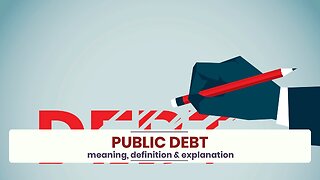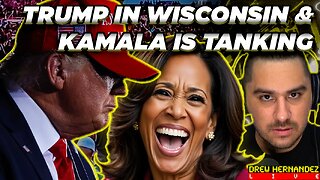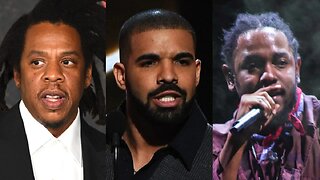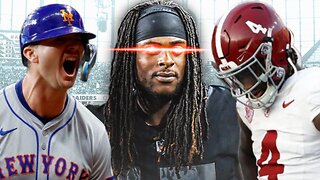What is UPPER MIDDLE CLASS?
✪✪✪✪✪
http://www.theaudiopedia.com
✪✪✪✪✪
What does UPPER MIDDLE CLASS mean? UPPER MIDDLE CLASS meaning - UPPER MIDDLE CLASS definition - UPPER MIDDLE CLASS explanation. What is the meaning of UPPER MIDDLE CLASS? What is the definition of UPPER MIDDLE CLASS? What does UPPER MIDDLE CLASS stand for? What is UPPER MIDDLE CLASS meaning? What is UPPER MIDDLE CLASS definition?
In sociology, the upper middle class is the social group constituted by higher status members of the middle class. This is in contrast to the term lower middle class, which is used for the group at the opposite end of the middle-class stratum, and to the broader term middle class. There is considerable debate as to how the upper middle class might be defined. According to sociologist Max Weber the upper middle class consists of well-educated professionals with postgraduate degrees and comfortable incomes.
The American upper middle class is defined similarly using income, education and occupation as the predominant indicators. In the United States, the upper middle class is defined as consisting mostly of white-collar professionals who not only have above-average personal incomes and advanced educational degrees but also a higher degree of autonomy in their work. The main occupational tasks of upper-middle-class individuals tend to center on conceptualizing, consulting, and instruction.
The American middle class (and its subdivisions) is not a strictly defined concept across disciplines, as economists and sociologists do not agree on defining the term. In academic models, the term applies to highly-educated, salaried professionals whose work is largely self-directed. Many have postgraduate degrees, with educational attainment serving as the main distinguishing feature of this class. Household incomes commonly may exceed $100,000, with some smaller one-income earners earning incomes in the high five figures. Typical professions for this class include lawyers, physicians, psychologists, certified public accountants, pharmacists, optometrists, stockbrokers, editors, dentists, engineers, professors, architects, school principals, urban planners, civil service executives, and civilian contractors.
The upper middle class has grown ... and its composition has changed. Increasingly salaried managers and professionals have replaced individual business owners and independent professionals. The key to the success of the upper middle class is the growing importance of educational certification ... its lifestyles and opinions are becoming increasingly normative for the whole society. It is in fact a porous class, open to people ... who earn the right credentials.
—?Dennis Gilbert, The American Class Structure, 1998
In addition to having autonomy in their work, above-average incomes, and advanced educations, the upper middle class also tends to be influential, setting trends and largely shaping public opinion. Overall, members of this class are also secure from economic down-turns and, unlike their counterparts in the statistical middle class, do not need to fear downsizing, corporate cost-cutting, or outsourcing—an economic benefit largely attributable to their postgraduate degrees and comfortable incomes, likely in the top income quintile or top third.
While many Americans cite income as the prime determinant of class, occupational status, educational attainment, and value systems are equally important variables. Income is in part determined by the scarcity of certain skill sets. An occupation that requires a scarce skill set which is attained through higher educational degree, and which involves higher autonomy, responsibility and influence, will usually offer higher economic compensation. Qualifying for such higher income often requires that individuals obtain the necessary skills (e.g., by attending law, medical, or postgraduate school) and demonstrate the necessary competencies. There are also differences between household and individual income. In 2005, 42% of US households (76% among the top quintile) had two or more income earners; as a result, 18% of households but only 5% of individuals had six-figure incomes. To illustrate, two nurses each making $55,000 per year can out-earn, in a household sense, a single attorney who makes a median of $95,000 annually.
The sociologists Dennis Gilbert, Willam Thompsonm and Joseph Hickey estimate the upper middle class to constitute roughly 15% of the population. Using the 15% figure one may conclude that the American upper middle class consists, strictly in an income sense, of professionals with personal incomes in excess of $62,500, who commonly reside in households with six-figure incomes. The difference between personal and household income can be explained by considering that 76% of households with incomes exceeding $90,000 (the top 20%) had two or more income earners.
-
 1:41
1:41
The Audiopedia
3 months agoWhat is PUBLIC DEBT?
47 -
 LIVE
LIVE
Right Side Broadcasting Network
3 days agoLIVE: President Trump Holds a Rally in Juneau, WI - 10/6/24
28,184 watching -
 1:59:02
1:59:02
The Quartering
3 hours agoDonald Trump LIVE In Wisconsin! Kamala Harris Losing Ground & Panics!
36.8K4 -
 2:23:03
2:23:03
WeAreChange
4 hours agoWhite House SNUBS Hurricane Victims! Sends $157 MILLION To Lebanon
21.7K25 -
 LIVE
LIVE
Drew Hernandez
12 hours agoTRUMP RALLY WI & KAMALA SENDS $160 MILL TO LEBANON
1,731 watching -
 LIVE
LIVE
Akademiks
4 hours agoKendrick Lamar Submits Not Like Us & Euphoria for Grammys. Drake Calls out Fake Friends.PRE HITLIST?
3,290 watching -
 1:26:33
1:26:33
Sports Wars
7 hours agoAlabama UPSET By Vanderbilt, MLB Playoff Shockers, Davante Adams WANTS OUT Of Vegas | NFL Week 5
49.9K1 -
 1:40:37
1:40:37
The Breanna Morello Show
1 day agoLIVE STREAM: Hurricane Helene Update on Sunday at 10am ET
46K52 -
 7:00:33
7:00:33
Vigilant News Network
23 hours agoBone-Chilling Flood Disaster Details Emerge | The Daily Dose
102K126 -
 17:51
17:51
Tundra Tactical
22 hours agoKamala Harris is the MOST ANTI-GUN VP EVER!!!
68.2K31